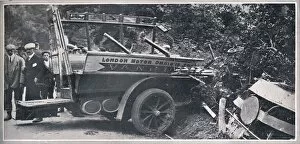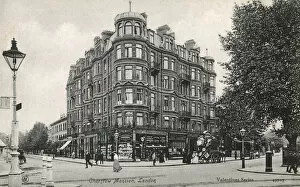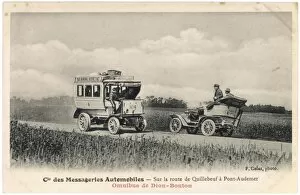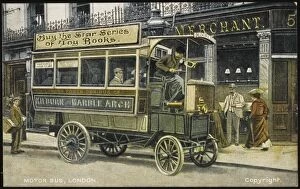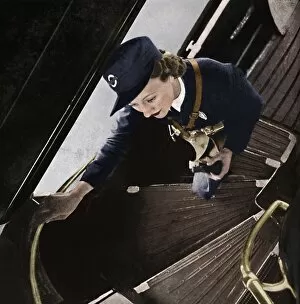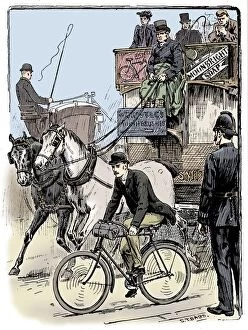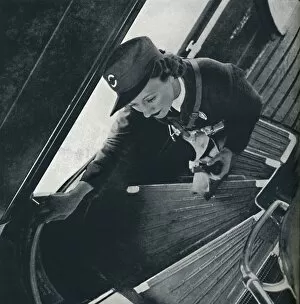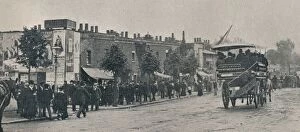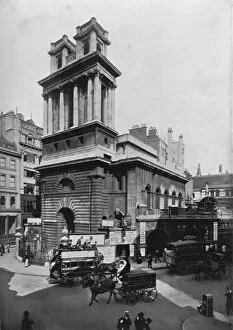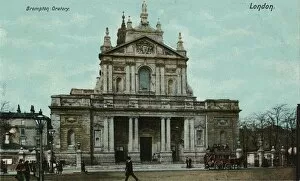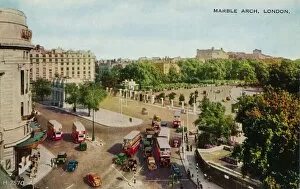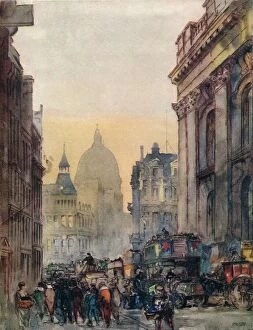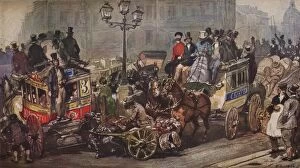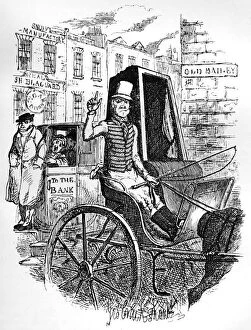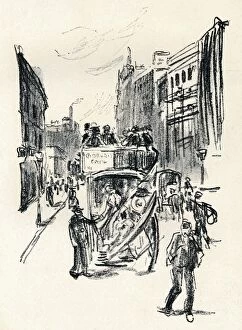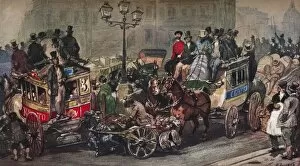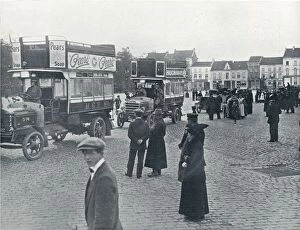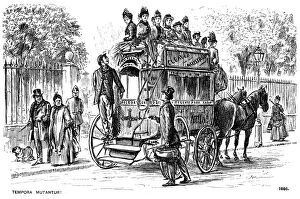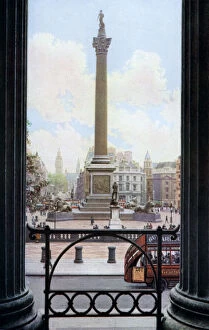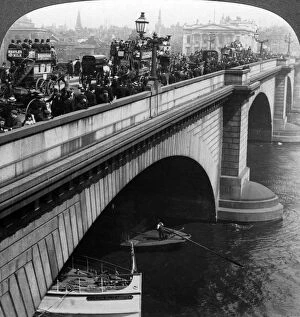Omnibus Collection (#16)
Omnibus, a word that conjures up images of bustling streets and the evolution of transportation
For sale as Licensed Images
Choose your image, Select your licence and Download the media
Omnibus, a word that conjures up images of bustling streets and the evolution of transportation. From the whimsical illustrations of "The Kinecar" by William Heath Robinson to the grandeur of "The Main Entrance - The Royal London Hospital, Whitechapel, " omnibuses have been an integral part of our urban landscape. In Trongate, Glasgow, captured on oil board, we see the vibrant energy as people hop on and off these iconic vehicles. And in "St. Paul's and Ludgate Hill, " painted with meticulous detail on canvas, we witness a snapshot of Victorian London where omnibuses traversed its busy streets. One such notable omnibus was the GWR Milnes-Daimler from 1904 – a marvel in its time. This motor bus revolutionized public transport and connected communities like never before. Its presence at Bristol Temple Meads Station marked a new era in travel convenience. Moving forward to the 1920s, we find ourselves amidst the hustle and bustle of Piccadilly Circus in London. Here, omnibuses were an essential mode of transportation for both locals and tourists alike. The Clock Tower at Victoria Station stands tall as a testament to their importance in Pimlico. Journeying through time brings us to High Street in Barnes, West London – a picturesque scene where an omnibus gracefully navigates its way along this charming street. Meanwhile, Halfway House in Swanley takes us back to 1935 when these vehicles served as lifelines connecting rural areas with nearby towns. Finally, Swindon Station transports us to 1930 when passengers eagerly awaited their arrival or departure aboard these trusty machines. Omnibuses have played an indelible role throughout history – bridging gaps between neighborhoods and fostering connections among diverse communities, and are not just means of transport but symbols representing progress and unity within society.



